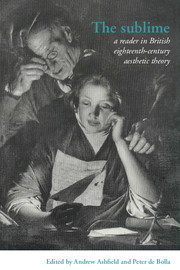Part VI - From the Picturesque to the Political
Published online by Cambridge University Press: 05 June 2012
Summary
The winding path [Chambers] is one of the most used schemes of garden design since it introduces time and delay, expectation and revelation into the circuit walk. This was exploited to the full in Kent's design of Rousham which not only incorporates the winding route into its large-scale design but also literally figures the serpentine form in the rill that serpentines through the upper part of the garden towards the area known as Venus' vale. The serpentine line was proclaimed by Hogarth to be ‘the line of beauty’.
Ruins were much admired for their being picturesque [Price]. The picturesque aesthetic developed by Gilpin and his followers had precise notions about the type and form of ruinated structures. Gilpin, for example, thought that Tintern Abbey, even though substantially a ruin when he visited it in 1770, was too uniform and recommended taking a mallet to the regular gables remaining in order to render them more picturesque. Fake ruins were also a part of landscape aesthetics; one of the earliest structures was designed by Sanderson Millar for Hagley Park in 1748.
Objects in the landscape were often designed so as to present different ‘fronts’ depending on the direction from which they were seen lending to the experience of landscape a kind of theatricality – which was directly invoked by the term used to describe Brownian plantations of trees: screens.
- Type
- Chapter
- Information
- The SublimeA Reader in British Eighteenth-Century Aesthetic Theory, pp. 263 - 267Publisher: Cambridge University PressPrint publication year: 1996



